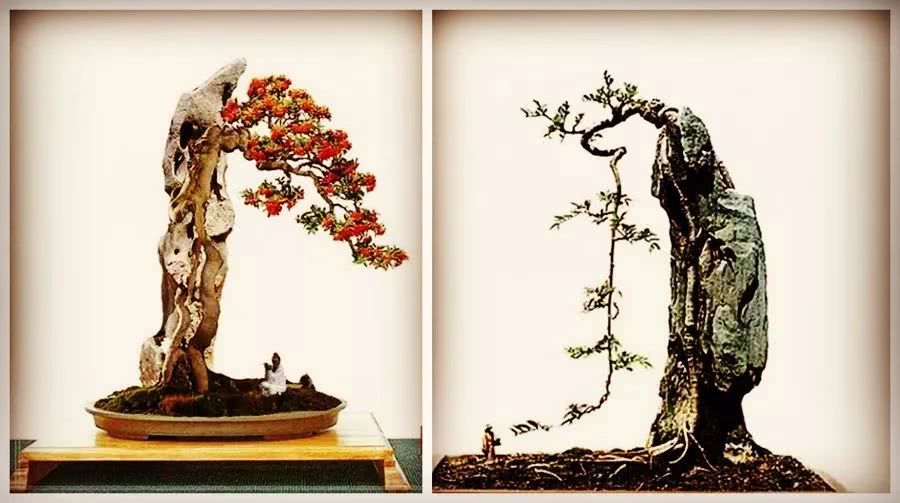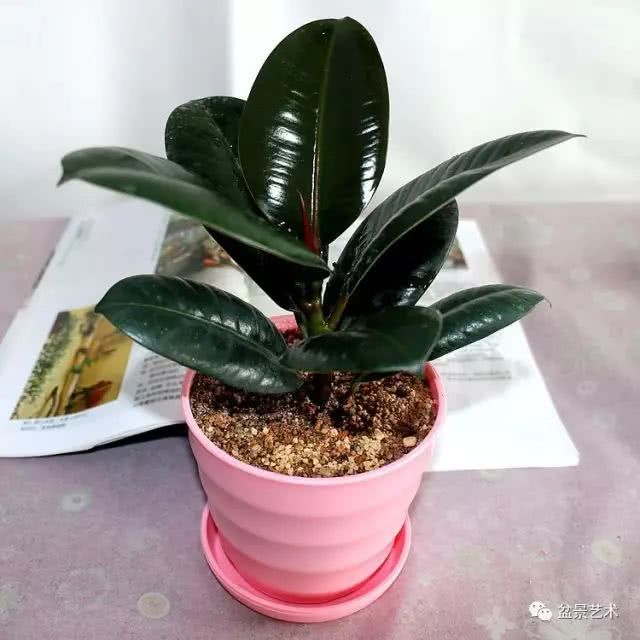Making of common forms of stone-attached bonsai

One is the scene of trees holding stones in nature. Take the old pile with long root system and graceful posture (you can also use the root nesting method to grow the root and then make it), according to the characteristics and creative intention of the selected stone, follow the texture of the stone embedded in the stone seam, then wrap it with thin wire, fill the stone crack with mud, and plant the stone together in the deep basin for maintenance. Later, according to the growth situation, combined with changing the basin, gradually remove the soil, remove the iron wire, expose the roots, and trim the fine roots that affect the beauty, then rinse the excess soil with clean water and plant it in the shallow basin for maintenance.
The second is the sight of tree roots rooted in the cracks in the rocks. First, carve deeper cracks and caves in the stone, fill the mud, and extend the root system directly to the sand and mud under the stone. If the stone grain is deeper, you can hang the roots of the trees along the stone and fasten the stone and roots with aluminum wire or plastic rope. Trees, stone, basin soil are often sprayed with water to keep warm, so that the long roots go deep into the cracks of the stone, and the stone trees are integrated.
The third is the scene of tree roots growing through stone caves. Dig holes in the rocks where trees need to be planted. The cave should be small and large, preferably to the bottom, so that the trees can absorb water and grow. The cave should be opened on the side or back of the stone in order to hide, and then the stump should be planted for maintenance. In particular, it should be noted that in the middle of summer, the hot baked stone can burn the roots attached to the stone, and even directly threaten the life of the stump, so it is necessary to protect the roots. In addition, after several cold winters, the temperature drops abruptly. In order to prevent the stone-attached roots from freezing, we should also protect the roots with soil.
Deep reading
- Prev

Hubei turquoise first betting material one-day trading volume of 10 million
Human nature loves to gamble, as it has been since childhood, how much to gamble, how much to gamble, whether to win or lose. Literary players are no exception, betting on sea yellow, jade and turquoise. Whenever you gamble, there is a risk of losing. Not long ago, Da Ren went to Qin Gu Mine, today.
- Next

The domestication technology of rubber tree
Family cultivation is generally propagated by cutting and high branch pressing, and the Yangtze River Basin is the most suitable from April to September every year. If cutting is carried out in spring and summer, the robust branches in the upper or middle of the plant should be selected as cuttings. Autumn.
Related
- Wuhan Hospital Iron Tree Blooming Result Was Instantly Frightened by the Gardener Master
- Which variety of camellia is the most fragrant and best? Which one do you like best?
- What is the small blue coat, the breeding methods and matters needing attention of the succulent plant
- Dormancy time and maintenance management of succulent plants during dormancy
- Minas succulent how to raise, Minas succulent plant pictures
- What are the varieties of winter succulent plants
- How to raise succulent plants in twelve rolls? let's take a look at some experience of breeding twelve rolls.
- Attention should be paid to water control for succulent plants during dormant period (winter and summer)
- Watering experience of twelve rolls of succulent plants
- Techniques for fertilizing succulent plants. An article will let you know how to fertilize succulent plants.

